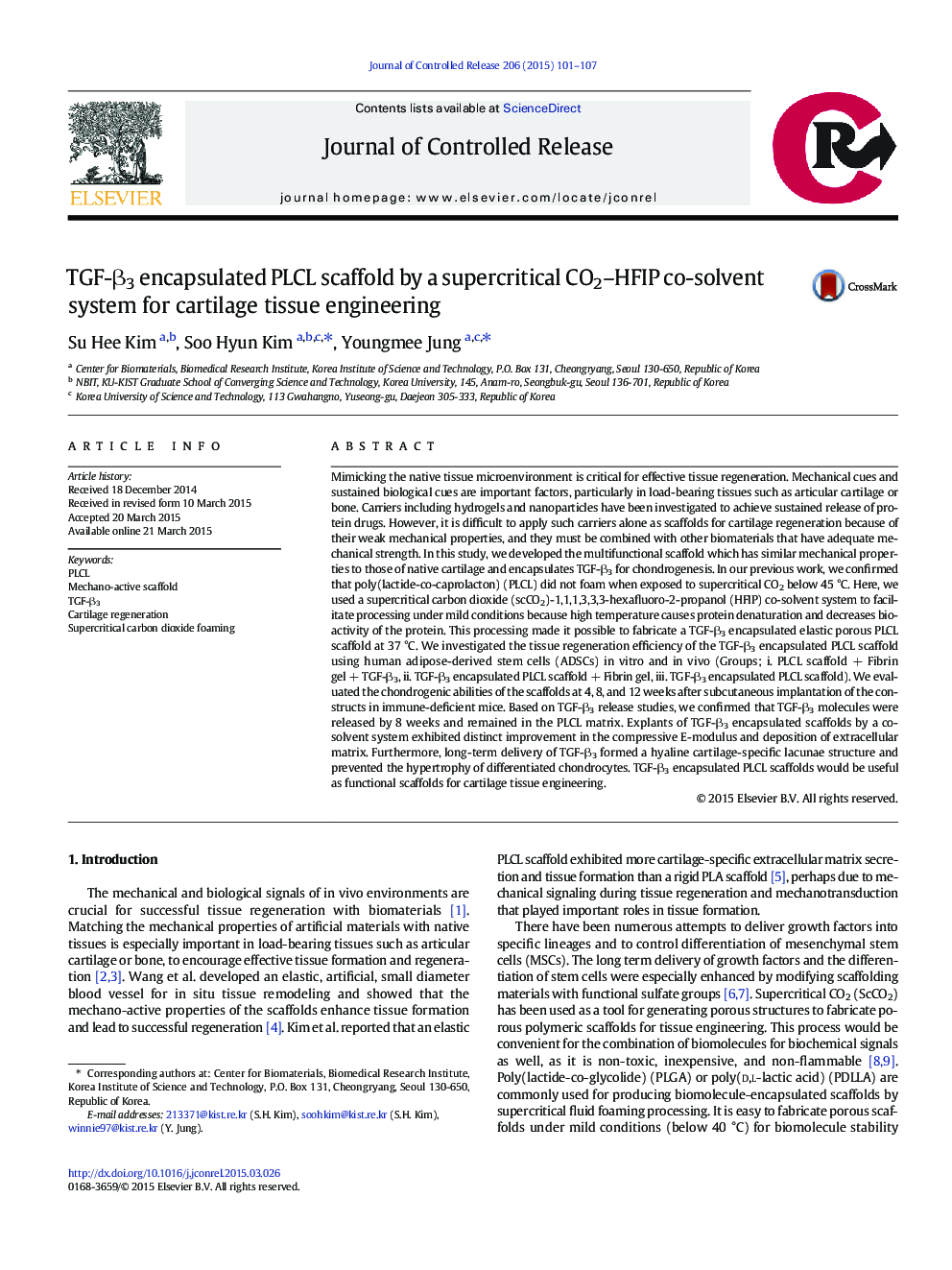| Article ID | Journal | Published Year | Pages | File Type |
|---|---|---|---|---|
| 1423806 | Journal of Controlled Release | 2015 | 7 Pages |
Mimicking the native tissue microenvironment is critical for effective tissue regeneration. Mechanical cues and sustained biological cues are important factors, particularly in load-bearing tissues such as articular cartilage or bone. Carriers including hydrogels and nanoparticles have been investigated to achieve sustained release of protein drugs. However, it is difficult to apply such carriers alone as scaffolds for cartilage regeneration because of their weak mechanical properties, and they must be combined with other biomaterials that have adequate mechanical strength. In this study, we developed the multifunctional scaffold which has similar mechanical properties to those of native cartilage and encapsulates TGF-β3 for chondrogenesis. In our previous work, we confirmed that poly(lactide-co-caprolacton) (PLCL) did not foam when exposed to supercritical CO2 below 45 °C. Here, we used a supercritical carbon dioxide (scCO2)-1,1,1,3,3,3-hexafluoro-2-propanol (HFIP) co-solvent system to facilitate processing under mild conditions because high temperature causes protein denaturation and decreases bioactivity of the protein. This processing made it possible to fabricate a TGF-β3 encapsulated elastic porous PLCL scaffold at 37 °C. We investigated the tissue regeneration efficiency of the TGF-β3 encapsulated PLCL scaffold using human adipose-derived stem cells (ADSCs) in vitro and in vivo (Groups; i. PLCL scaffold + Fibrin gel + TGF-β3, ii. TGF-β3 encapsulated PLCL scaffold + Fibrin gel, iii. TGF-β3 encapsulated PLCL scaffold). We evaluated the chondrogenic abilities of the scaffolds at 4, 8, and 12 weeks after subcutaneous implantation of the constructs in immune-deficient mice. Based on TGF-β3 release studies, we confirmed that TGF-β3 molecules were released by 8 weeks and remained in the PLCL matrix. Explants of TGF-β3 encapsulated scaffolds by a co-solvent system exhibited distinct improvement in the compressive E-modulus and deposition of extracellular matrix. Furthermore, long-term delivery of TGF-β3 formed a hyaline cartilage-specific lacunae structure and prevented the hypertrophy of differentiated chondrocytes. TGF-β3 encapsulated PLCL scaffolds would be useful as functional scaffolds for cartilage tissue engineering.
Graphical abstractFigure optionsDownload full-size imageDownload high-quality image (277 K)Download as PowerPoint slide
